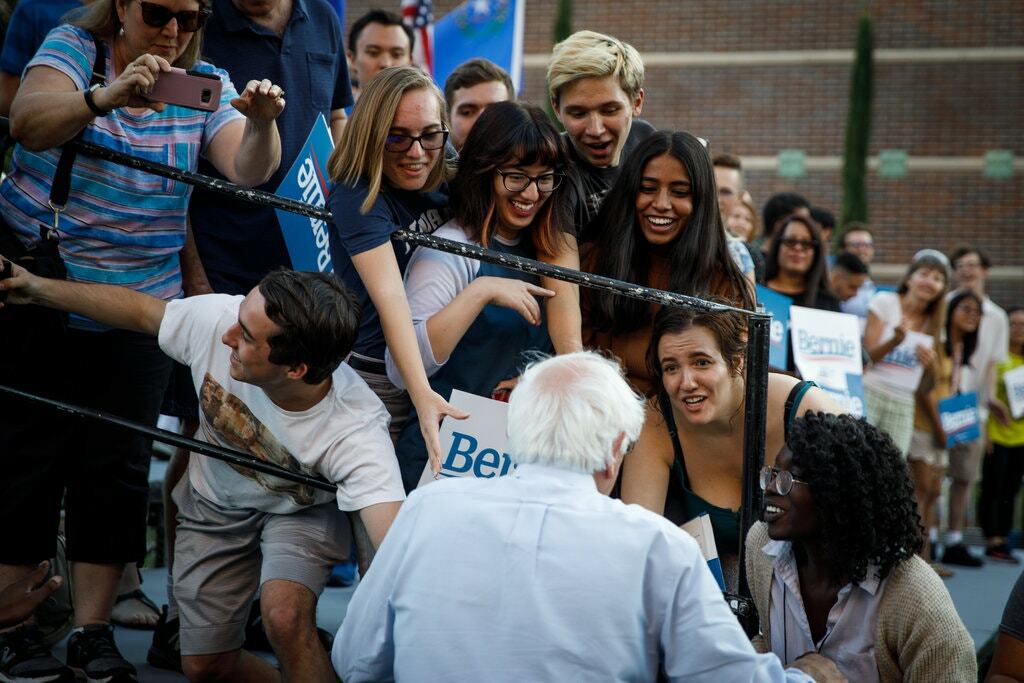Bernie Sanders has gone much further than any of the other 2020 Democratic presidential candidates in proposing not just more money for affordable housing, or more enforcement of fair-housing laws, but also fundamental changes in how the housing market functions.
His most startling ideas — a national rent control standard, and new taxes on land speculation and house “flipping” — would bring America closer to the idea that housing should be treated as shelter and not a commodity.
But in the housing plan his campaign released Wednesday, Mr. Sanders doesn’t go all the way there. He allows for profit, but not certain kinds of profit, or profit by certain kinds of actors. In that middle ground, somewhere between the private market and social housing for all, things get complicated.
The national rent control standard Mr. Sanders has proposed would cap the amount that landlords can raise rents, to shield tenants from escalating housing costs and, in a deeper sense, the excesses of capitalism in the housing market. Landlords could raise the rent by no more than 3 percent per year, or one and a half times the rate of inflation, whichever is higher.
His housing plan says nothing about the profits of people buying and selling homes in the normal course of homeownership. In fact, Mr. Sanders would invest an additional $8 billion into federal programs to help first-time home buyers, precisely because homeownership in America is often a means of building wealth.
Between the two proposals lies a fraught balance: One would curb profits in the housing market, while the other acknowledges that many Americans depend on those profits. Mr. Sanders’s campaign seeks to reconcile the two by arguing that rich investors or landlords shouldn’t get to make so much, while ordinary American families should have a chance to make something.
“We want to return to the notion that homeownership can be an asset builder for working people and average American families, and it is not just a vehicle to commodify to make the rich richer,” said Josh Orton, a senior adviser to the Sanders campaign and its national policy director.
In practice, however, it’s not always obvious how to distinguish the working families from the rich investors, or how to devise policies that crack down on the one but not the other. Some middle-class families, for example, build wealth by owning rental properties. And landlord groups are skeptical that 3 percent rent increases would build them much wealth, especially when property taxes, insurance rates and utilities aren’t also capped.
Mr. Sanders’s proposal would also put a hefty tax on house flipping, hitting owners who sell a property for more than the original price within five years of purchase (for a place they don’t occupy). But that definition would cover people we don’t think of as flippers: a small-scale general contractor who remodels two homes a year; a family that buys a home for an aging parent who later dies; a landlord who herself faces financial distress and must get out of the business.
Mr. Sanders has similarly proposed a tax on empty homes, aimed at speculators who sit on vacant properties until they become more lucrative to redevelop, or simply profitable to resell. That is a real problem in some communities, leaving neighbors to live with blight for years. But owning an empty home doesn’t necessarily make you a speculator. Someone who has put a property on the market and struggled to sell it for months might end up facing this tax.
The full proposal, emphasizing the feel-good parts of the market but not the others, is trying to have it both ways, said Jenny Schuetz, a housing economist at the Brookings Institution who has been following housing proposals from the 2020 candidates.
“In some ideal universe, people would buy homes (or rental properties) that appreciated slightly faster than inflation, allowing them to build wealth, but without housing costs rising too fast to pressure renters, deter new homeowners, or create excess capital gains,” Ms. Schuetz wrote in an email. “In that context, both rent control and flipping taxes make sense. The problem is, with any semblance of a private real estate market, land and housing values don’t behave that way.”

She is skeptical that it is even possible to design or regulate a market that gives modest returns to individual homeowners, but never gives big returns to landlords; that penalizes greedy flippers, but never harms small-time contractors; that taxes vacant homes but doesn’t punish working families.
Mr. Sanders’s ideas invite a host of questions about how they would technically work (how do we police a million landlords?) and where their legal authority would come from (would the courts uphold a national rent control law?). But these deeper questions about the kind of housing market voters might want seem worth hashing out, regardless of those other details.
Mr. Orton, the Sanders adviser, pushed back against the logic of economists that, for one, rent control discourages developers from building and landlords from renting housing that Americans badly need.
“I would say to those economists, how is that working out?” he said of the current deference to the market. “That’s what we’ve been doing. When we’ve left this to private developers, everything from the crash of the housing market to how we’ve seen gentrification just explode in some of the most vulnerable communities, to how we’ve seen people priced out of what would normally be affordable housing — this current crisis is the result of that.”
Source; nytimes




